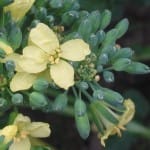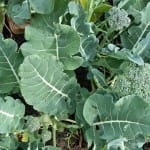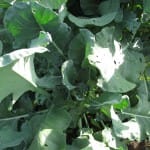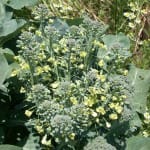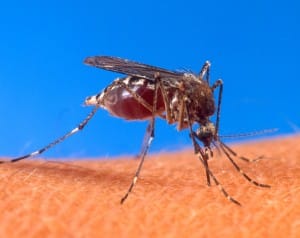Source(s): Walter Reeves, College of Agricultural and Environmental Sciences, Former County Extension Agent – DeKalb County
GOURDS are one of the oldest crops on record. They have been used as ornaments, dippers, water jugs, household containers, bird houses and others. The Luffa (dishrag gourd) has a number of possible uses. It has been used in oil filters, upholstery, life preservers, hats and as a dish cloth. In the immature state it can be eaten and is often called vining or running okra. Other types of gourds may be sold as vegetable spaghetti or healing squash.
Classification
Gourds belong to the plant family Cucurbitaceae which includes cucumbers, watermelons, cantaloupes, squash, pumpkins and citron. Gourds are primarily in the following three genera:
- Cucurbits – Flowers are yellow. Gourds must be harvested before frost.
- Cucurbita pepo var. ovifera includes these varieties: Apple, Bell, Flat Striped, Egg, Finger (Crown of Thorns, Holy Crown, Ten Commandments), Miniature, Orange, Pear Spoon and waited sorts.
- Cucurbita maxima includes the Turks Turban and Aladdin gourds.
- Lagenaria – Flowers are white. Mature fruit not damaged by frost.
- Lagenaria siceraria includes Dipper, Caveman’s Club, Giant Bottle, Calabash, Penguin, Powder Horn, Martin gourds and others (Healing squash is one of this group).
- Luffa – Flowers are yellow. Often called vegetable sponge, dishrag gourd, or running okra. One specie is ridged and the other is smooth.
Gourds are easy to grow provided some attention is given to all phases of production. These plants have the same general growth pattern as pumpkins, squash and melons and should be given similar treatment.
Planting should be accomplished as soon as the soil warms up in early spring. Gourds perform best when grown on trellises similar to those used for grapes, and will continue to produce fruits until killed by frost in the fall.
A fertile loamy soil in full sunlight is best for growth with organic matter or compost added when necessary. The soil should be worked to a depth of eight to sixteen inches with rotted manure, fertilizer and lime mixed in to the full depth.
Gourds are fertilized the same way as cucumbers and melons. Incorporate 5-10-10 or a similar fertilizer (6-12-12) into the soil at planting, at a rate of 4 pounds per 100 feet of row.
When the plant runners are 12 to 18 inches long, fertilize again spreading the fertilizer at least 18 inches away from the plant stems.
Make a third application after your first gourds are set on the vine.
Gourds require a great deal of growing room. All types may be grown on trellises with a bamboo stake placed near the growing mound and tied to trellis wires to help train the plants upward.
Cultivation is necessary to keep down grass and weeds until the vines have become well established. Insects and diseases will also cause extensive damage and must be controlled with a spray or dust program.
Remove the gourds from the vine with sharp clippers or shears. They should not be twisted or pulled from the vine as the stem enhances the decorative value.
Cucurbitas mature in August and should be harvested as soon as they become hard.
All gourds should be handled as gently as one would eggs, in order to prevent the slightest bruises which may serve as an entrance for rot organisms. Clean containers with smooth inside surfaces should be used for transporting gourds from the field and to storage.
The Luffa gourd has gained wide attention due to its large yellow fruits which are up to thirty inches in length, giving them a greater ornamental value. Also, the fibrous interior of the Luffa has been used in oil filters on diesel engines, upholstery, life preservers, hats, dish cloths, sandals and many other items.
One of the best methods of cleaning and curing gourds is to wash them in a strong solution of sulpho naphthol or any other non-bleaching disinfectant. A soft brush is ideal for removing dirt, dust and other foreign matter when washing.
After being cleaned thoroughly, the gourds should be placed in a cool, airy location in the absence of direct sunlight. Direct sunlight will cause the gourds to lose their color.
When the gourds have dried completely, they may be waxed with a liquid floor wax or varnished and at this point are ready for use as decorations or any other purpose to which they might be suited.
Resource(s): Vegetable Gardening in Georgia
Center Publication Number: 25



